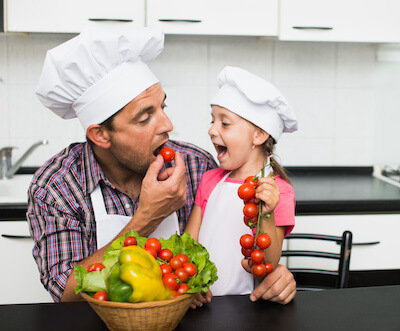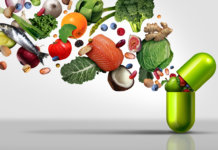The healthiest way to cook vegetables
Knowing the healthiest ways to cook vegetables can help us receive the highest benefit of following a plant-based diet. The concentration of nutrients in raw vegetables can change significantly during the cooking process.
Vegetables are filled with minerals and vitamins
These important micronutrients we need daily are sensitive to heat or are soluble in water. Therefore, cooking them makes them lose a significant part of their nutritional value.
The Best Way to Eat Vegetables
To experience the full health supports of these micronutrients, we must eat them raw. Tomatoes, cucumber, lettuce, celery, and many other vegetables can be eaten raw very easily. Other vegetables, such as potatoes, sweet corn, green peas, cauliflower, cabbage and broccoli must be cooked.
The Healthiest Ways to Cook Vegetables
Boiling
Since boiling vegetables doesn’t required the use of fats or oils it is perceived as a healthy cooking method. But this is also the reason why most people find the taste of boiled vegetables to be average at best.
Science shows us that there is more behind this average taste than just the simple lack of oil. Boiled vegetables lose far more vitamins and minerals than vegetables prepared using other cooking methods.
Long exposure to heat and water are to blame for the absence of flavor
Vitamin C, as well as some of the B-complex vitamins, are easily soluble in water. Boiling can cause more than 50% of these vitamins to be lost during cooking.
Therefore, boiling as a method of vegetable preparation is only good for dishes such as soups, pottages, chowders, bouillons, broths, and stews because their product includes the water that vegetables were cooked in.
Steaming
When it comes to flavor, steamed and boiled vegetables top the “nothing special” list. However, steaming is a much healthier method to prepare vegetables because they are exposed to a minimal amount of water. As a result, the total loss of nutrients is lower than 15%.
Frying (Sautéing)
For frying we use oils or fats. Since fats are associated with increased risk of cardiovascular disease, frying is the least healthy method of preparing vegetables.
When it comes to preserving nutrients in vegetables, frying is not as bad as it might seem. First, frying is a quicker process than boiling, which means less exposure to heat. And second, frying does not include the use of water and, therefore, causes no loss of water-soluble vitamins.
Baking and Roasting
During baking, the intense heat of the oven dry-cooks the vegetables. There is no water involved and, therefore, the loss of the nutrients is brought to a minimum. Fats and oils are not necessary in baking, so that is a plus.
However, the temperatures inside the oven are very high and the baking process usually lasts longer than boiling or frying. This means that vegetables are exposed to intense heat which can damage and reduce the amount of some nutrients such as B-complex vitamins.
Grilling
Grilled and delicious are almost synonyms. Grilled foods simply taste good and vegetables are no exemption.
Grilling is a dry-cooking method of vegetable preparation
In this way, it is like baking. However, baking uses dry and hot air to cook the vegetables. In grilling, a hot board or a grill is used to cook the vegetables.
During this process, the vegetables are all the time in contact with the surface.
This causes the liquids filled with nutrients to drip out of the grilled vegetables. Therefore, grilling reduces the nutritional value of vegetables (up to 40%) and even though it is a tasty cooking option it is not the healthiest one.
Microwaving
Microwaving checks all the boxes on the nutrient-friendly vegetables cooking action sheet. It involves a short and low exposure to high temperatures and no water. This means that all the nutrients have a very good chance of survival. The loss of vitamin C in vegetables during microwaving is less than 30%, the least of all cooking methods.
The Healthiest Ways to Cook Vegetables, The Bottom Line
While some vegetables have to be cooked before eating, others can be consumed raw. However, most vegetables are somewhere in the middle. This means that although they can be consumed raw, cooking and combining these vegetables with other types of food makes them taste significantly better. The good news is that delicious does not have to mean less healthy. By following the advice given in this article you can learn to prepare your vegetables in the best way possible and still preserve most of the valuable nutrients.




